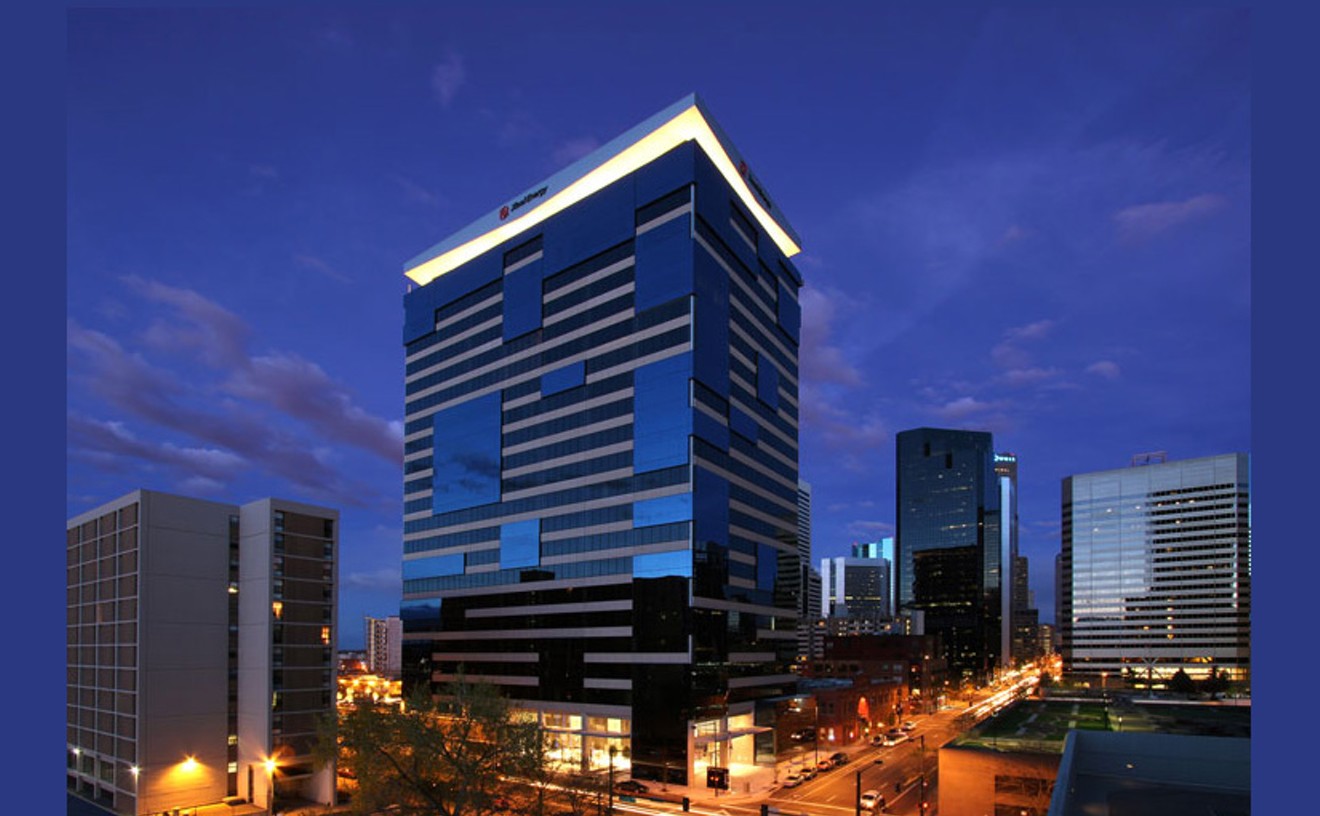Tony Shawcross, the driving force behind a non-profit film and video concern called Deproduction, is an idealist, which explains why, back in 2005, he eagerly sought a job hardly anyone else wanted: overseeing Denver's public-access television channels.
At the time, public access was in decline nationwide due in large part to successful lobbying by cable companies, whose reps argued that such channels were no longer necessary in the age of YouTube. Worse, the average viewer didn't seem disheartened by the prospect of the service going away. Boulder residents who responded to a 2003 survey ranked public-access TV as the lowest priority in the city's budget, providing officials with a gold-plated excuse to stop funding Community Access Television, its local facilitator, two years later. Few would have been surprised if Denver's operation had joined it on the scrap heap of outmoded technology — not even Shawcross, who serves as executive director of Denver Open Media, the organization formed to fulfill the city's mandate.
"I probably hear about a station that's losing funding at least once a week," he says. "That might not mean shutting their doors; it could be losing half their funding or something like that. But it's a common thing — a result of a shift in the government toward being more industry-friendly and less a watchdog or public steward."
Whatever the case, most of the stipends once enjoyed by Denver Community Television, DOM's predecessor, vanished in 2004, and they're not returning. Denver continues to collect public-access and government monies (known as PEG fees) from Comcast, the city's official cable provider, but they only pay for capital expenses — cameras, servers and so on. "Our rent, our salaries, our operating expenses — we get no support from the city for those," Shawcross notes.
And yet somehow, Denver Open Media lives on, and so do three channels of programming (Comcast users can find them on channels 56, 57 and 219). Moreover, DOM's future looks brighter than any sane person would have predicted thanks to two major breakthroughs. First, Shawcross and company created a system allowing viewers to vote for favorite programs or text comments that scroll across the bottom of the screen on Channel 56, the outlet's main platform, in very close to real time — an interactivity breakthrough that's leading to growing (if still modest) viewership among the current generation of cell-phone addicts. Then they applied for a grant from the Knight Foundation, an organization affiliated with the Knight Ridder media conglomerate, to finance the packaging of their innovative yet extremely cost-effective concept in ways that can be applied by public-access stations from coast to coast — and they were recently given $380,000 to put toward accomplishing that goal.
On July 10, at the Alliance for Community Media conference in Washington, D.C., the DOM crew will formally invite stations to sign up. "We'll pick the stations in November and start working with them in early 2009," Shawcross says.
The winners would do well to emulate the manner in which Denver Open Media stretches its resources. Deproduction generates much of the revenue DOM needs to pay its bills; Shawcross estimates that the firm creates content for fifteen to twenty clients per annum. In addition, Denver Open Media is paid by the state to operate the Colorado Channel, the state's C-SPAN equivalent, which broadcasts sessions of the Colorado General Assembly; it debuted on Comcast Channel 165 in January.
These efforts are complemented by a handful of grants (from the Anschutz Family Foundation, among others) and awards (like a 2007 Westword MasterMind prize) that preceded the big one from the Knight Foundation, not to mention an overall philosophy that combines technology with a citizens-first philosophy. Producers take classes to learn how to use the equipment and so forth, and once they're trained, they're essentially given the keys to a highly automated system that allows them to do virtually everything themselves — a significant change from the DCTV method.
"At its smallest, Denver Community Television still had ten employees," Shawcross points out. "But because of the way we set things up, we were able to do everything with three when we first started. They had at least two staff members assigned to their broadcast schedule, and we have zero. We spend maybe an hour a week on scheduling, and we don't have anyone assigned to quality control of content; we depend on viewers to flag anything that's wrong. And this same kind of thing happens in every area. Producers are able to reserve equipment and ingest their own shows, which reduces costs and shifts the workload, in a lot of situations, and the control over to the community."
DOM isn't proprietary about the programs that make its approach possible. Far from it: All of them were constructed under the auspices of Drupal, an open-source web-development community. Shawcross likens the notion to Wikipedia, "where people are developing software and website ideas on top of each other. They want to participate in media, want to communicate with the community, want these tools to be available — and we know the only prayer we have of being relevant in this kind of media landscape is to leverage the work of all of them." With that in mind, Denver Open Media is hosting Colorado's first Drupal conference on July 26 and 27 (information is available at http://drupalcampcolorado.org), as well as the Alliance for Community Media's western regional conference in October, at which DOM will demonstrate its latest creations.
As if that weren't enough, Shawcross has one more project in the works: a collage-style film using real events at the Democratic National Convention as the backdrop. The inspiration for the flick is Medium Cool, a 1969 movie by director/cinematographer Haskell Wexler that thrust a fictional news cameraman, portrayed by Robert Forster, into the maelstrom of the 1968 Democratic convention in Chicago. Wexler captured vivid footage of the rioting that took place outside the city's International Amphitheatre, where the delegates gathered and security forces engaged in their own brand of rough justice; then-CBS correspondent Dan Rather was famously clobbered on live television.
Rather than emphasizing a single narrative or protagonist, however, Shawcross wants to tell a slew of stories. "We're working on getting ten or fifteen production teams and having each of them do a short, from five to fifteen minutes long, that focuses on a single scene," he says. "And all of the shorts will look at the myth of black and white — of good versus evil versus shades of gray, which we think relates to the idea of only being able to choose between two candidates, or two political parties." And if Chicago-style mayhem doesn't break out? No problem, Shawcross insists: "The idea is to work with these groups over the next few months to make sure everyone has a solid script and to make sure the setting of the conversation and the action is flexible enough that it could be happening if there are cops and tear gas or if everyone is singing 'Kumbaya' in Civic Center Park."
As is typical for Shawcross, he doesn't want to limit participation to those with experience in the field. Instead, he explains, "we're building another tool in Drupal that will help people say, 'I want to learn more about film production,' and we'll help production crews find each other on the Denver Open Media website," at www.DenverOpenMedia.org. The filmmakers will use equipment purchased with the aforementioned PEG fees, with at least four crews receiving what Shawcross describes as "the full high-definition production package." After the convention, the movie will be assembled and shopped on the film-festival circuit. "I'm not expecting it to be picked up by Sony," he admits. "I just hope it inspires more people to make media — to show that they can share their perspective and influence their community through media and film even if they don't have a huge budget or the backing of a network or distributor."
Of course, making such a film would have been impossible were it not for the 2005 city council decision to put Shawcross in charge of three public-access channels that seemed nothing less than doomed. Every once in a while, idealism pays off.











